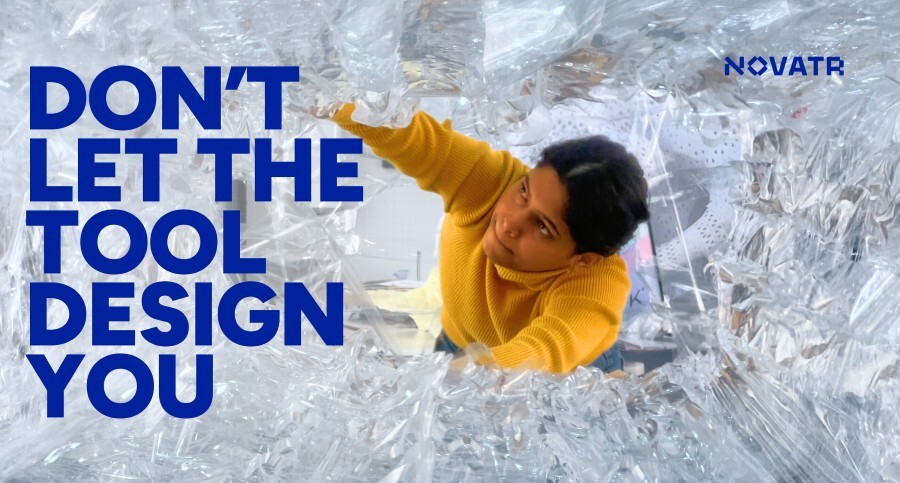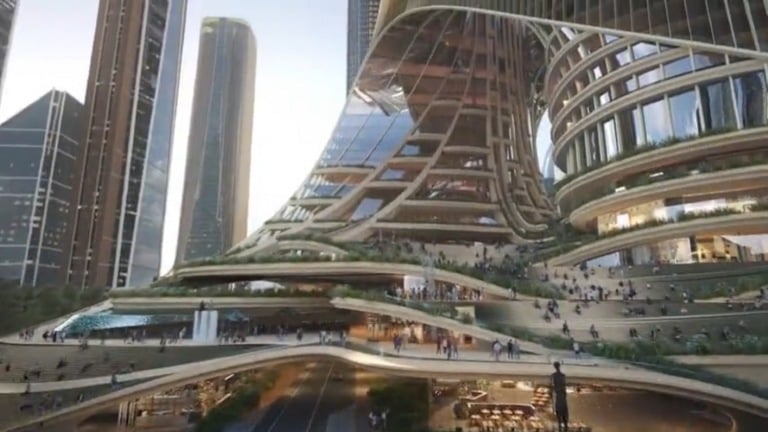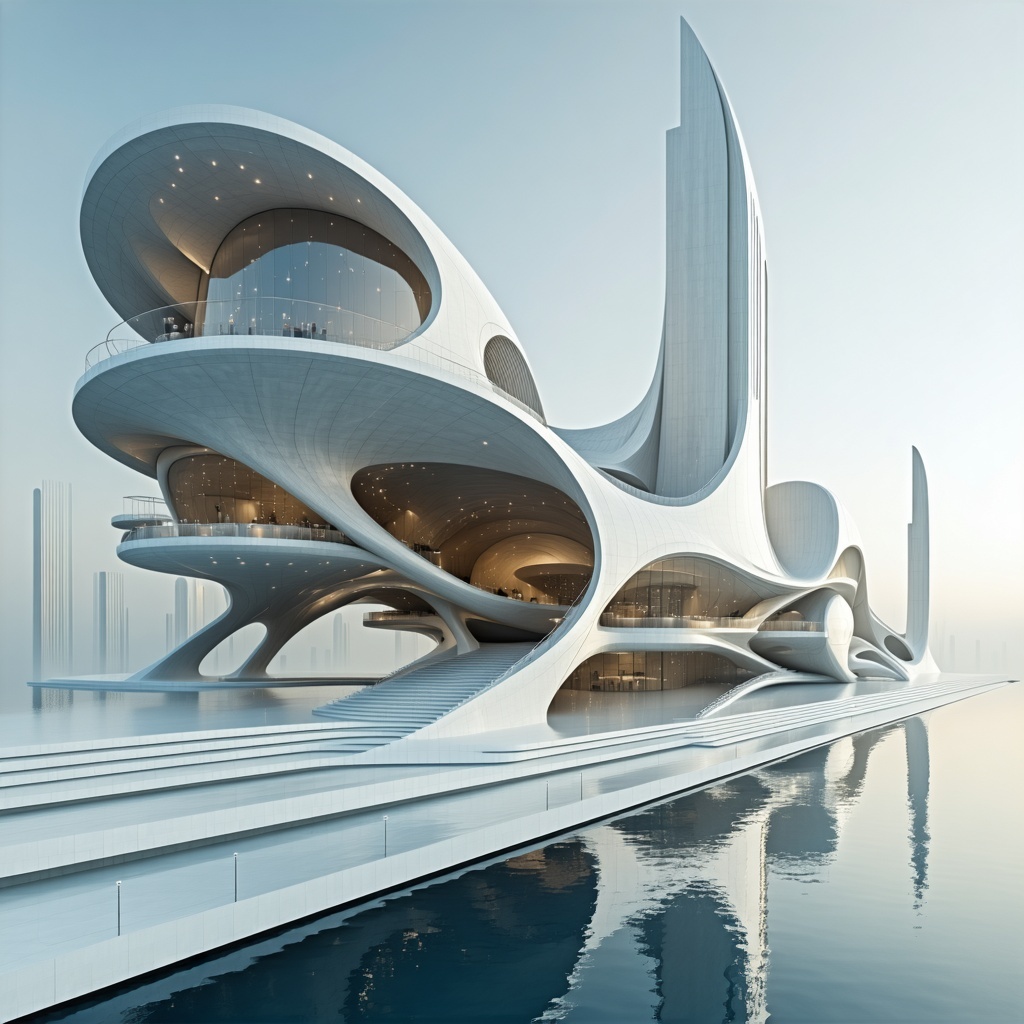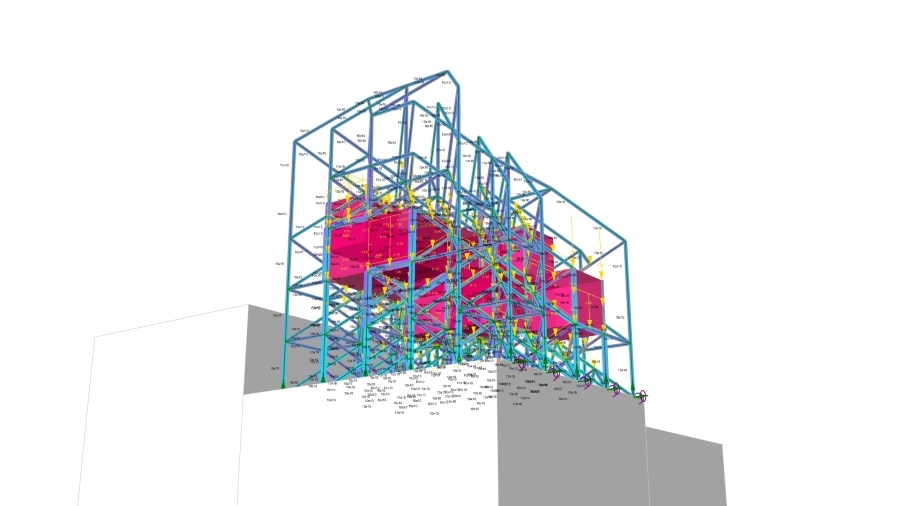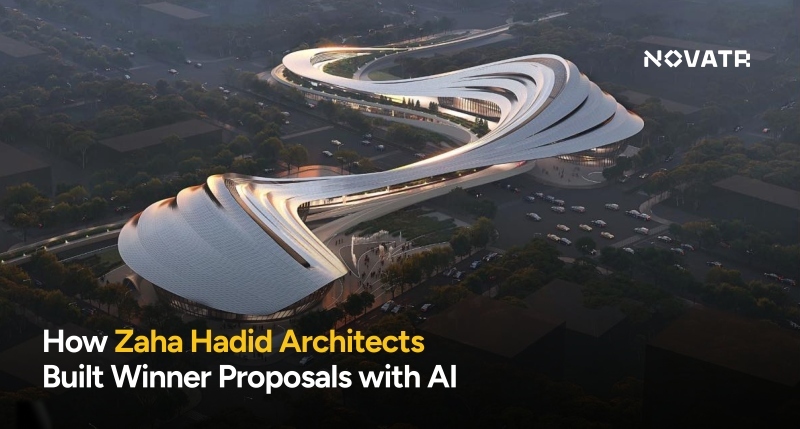
Zaha Hadid Architects (ZHA) is redefining architectural design by merging artistic vision with cutting-edge technology. Leveraging NVIDIA Omniverse and OpenUSD, the team has streamlined collaboration, accelerated iterations, and unlocked new levels of fidelity and scale. Equally remarkable is the spellbinding use of Generative AI in Zaha Hadid's buildings. With ZHA CODE driving innovation through custom extensions, digital twins, and robotic fabrication, the practice is not only solving real-world challenges but also pioneering workflows for the Zaha Hadid metaverse.
Unified Workflows Setting New Standards
For the past 30 years, Zaha Hadid Architects (ZHA) has been blending the precision of architectural tools with the creativity of movie and video game tech. Zaha Hadid buildings push boundaries—with robotic fabrication, complex curves, and massive datasets—often hitting 60 million polygons. But working across multiple tools like Maya and Rhino made collaboration slow and clunky, with designers spending hours each week exporting, compiling, and rendering just to see a unified scene.
Now, with NVIDIA Omniverse and OpenUSD, Zaha Hadid Architects has streamlined everything. Instead of stitching files together manually, assets flow into one USD Stage in real time. Reviews are faster, fidelity is preserved, and even simulations can be saved as animations.
As Shajay Bhooshan, Associate Director at Zaha Hadid Architects, puts it: “USD lets us see everything in one place. I don’t have to jump into Maya or Rhino—I can just open the USD file, review geometry, and give feedback instantly.”
Faster Iterations and Real-Time Collaboration
At Zaha Hadid Architects, over 20 designers are already using custom Omniverse extensions—and that number is set to more than double. “Omniverse fits perfectly with our mesh-based, high-fidelity, high-performance approach,” says Shajay Bhooshan. “USD and Omniverse feel like a GitHub for architectural design.”
The biggest win? Time. Instead of spending hours on data prep and clunky imports, the team can focus on what matters: iteration. ZHA’s “edit-and-observe” philosophy enables the generation of hundreds of design options under tight deadlines, and Omniverse makes that process seamless.
Rendering workflows are seeing the same transformation. “We can now share files with partners instantly, instead of waiting 11 hours for imports,” notes Vishu Bhooshan, lead designer at ZHA’s Computation and Design Research group. With USD, teams will soon be able to start rendering in parallel with ongoing design work—no need to wait for full data aggregation.
And the long-term vision? A unified asset repository integrated with NVIDIA’s AI breakthroughs, such as text-to-3D, unlocking truly parallel and intelligent workflows for the future of design.
Building with Omniverse Core Technology

Zaha Hadid Architects’ Computation and Design Group (ZHA CODE) is where cutting-edge tech meets architectural imagination. Zaha Hadid's buildings are created using advanced parametric software, custom frameworks like the Spatial Technology Stack (STS), and even robotic fabrication to push design speed, precision, and creativity.
Recently, ZHA CODE began developing directly on NVIDIA Omniverse—building over 10 custom extensions in just 10 months. Instead of relying on temporary workarounds, they’re now shaping scalable tools that are transforming how architecture is done.
Take robotic hot-wire cutting, for example. By simulating robotic arms in Omniverse, the team created a digital twin of the robot that learned to carve complex, doubly curved concrete moulds virtually—before ever touching a real machine. Once trained, the robot executed in the physical world exactly as designed, drastically cutting fabrication time. The extension worked so well, they even open-sourced it for others to use.
The same approach scaled up to massive projects, like a stadium in China with thousands of roof panels. Using a custom Omniverse tool, ZHA quickly identified and converted complex non-planar panels into workable planar ones, an impossible task to complete manually.
It’s this mix of real-world problem solving and experimental digital tools that keeps ZHA CODE at the forefront of high-performance design.
Also Read - How To Get Hired by Zaha or BIG?
Expanding into the Metaverse
For Zaha Hadid Architects, the next frontier goes beyond buildings—it’s about creating immersive digital worlds. By building on USD and NVIDIA Omniverse, the team is experimenting with Zaha Hadid metaverse-ready environments where their designs don’t just exist as static models, but as interactive, living spaces.
This expansion opens new possibilities: virtual showrooms for clients, collaborative spaces where teams across the globe can co-create in real time, and digital twins that mirror the physical world with precision. For ZHA, the metaverse isn’t a distraction from architecture—it’s an extension of it, blending design, data, and experience into a new dimension of storytelling and spatial innovation.
Conclusion
By embracing OpenUSD and Omniverse, ZHA is shaping the future of architecture—where design, data, and immersive technology converge to deliver faster, smarter, and more transformative experiences.
If you’re looking to break into the world of computational design and future-ready workflows, Novatr is the perfect place to start. Built for architects and designers, the Computational Design Course goes beyond theory—equipping you with the skills to work on real projects. You’ll learn how to use powerful tools like Rhino and Grasshopper to create complex geometries, optimize designs, and even explore emerging technologies like digital twins and collaborative platforms, much like the cutting-edge workflows pioneered at Zaha Hadid Architects.
For more insights and to stay updated with the latest trends in architecture and design, be sure to explore Novatr’s Resource Page!
Was this content helpful to you




